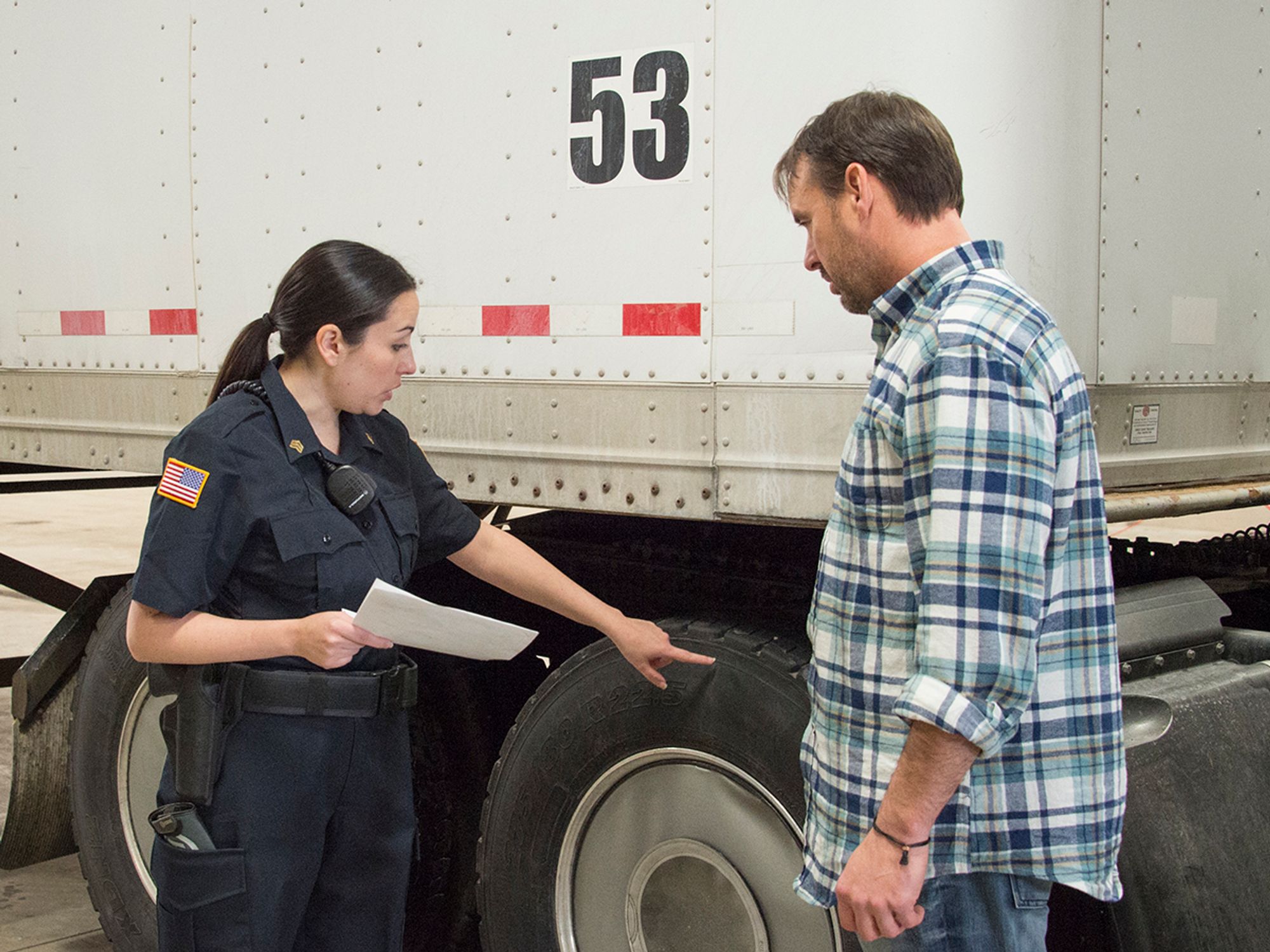The “walkaround”

- During the vehicle “walkaround,” the officer will inspect all vehicle components for function, damage, looseness, and excessive wear.
- The officer will verify that the cargo is secured against movement, which may involve breaking the seal of the trailer.
After providing the driver with the necessary preparatory information and instructions, the officer will conduct the “walkaround” portion of the vehicle inspection. This involves checking all the lights and all mechanical components that are visible without going under the vehicle.
The officer will work around the vehicle, starting at the front of the vehicle and then down the left side, across the rear, and up the right side. During this part of the inspection, the officer will be inspecting all of the components listed below for function, damage, looseness, excessive wear, and will be comparing the condition of these components to the requirements in Part 393 and Appendix A to Part 396:
- Windshield and side windows;
- Windshield wipers and washer system;
- All required lights;
- Visible air/brake lines;
- Cargo securement;
- Coupling devices;
- Exhaust system;
- Visible part of the frames;
- Fuel system;
- Visible suspension components; and
- The wheel assemblies, including the tires, rims, lugs, wheels, and hubs.
As far as cargo securement, the officer will verify that the cargo is secured against movement in accordance with the requirements in Subpart I of Part 393. For van-type units, this may involve breaking the seal (if one was used) and verifying the cargo is secured using the front and sidewalls of the trailer, and some type of rear securement. In the case of flatbed-type vehicles, this will involve verifying that there are enough securement devices to satisfy the requirements, that they are tight, and that they are not damaged.
In some cases, the officer may stop the inspection after the walkaround. If this happens, the officer will document the driver portion and any vehicle defects discovered.
